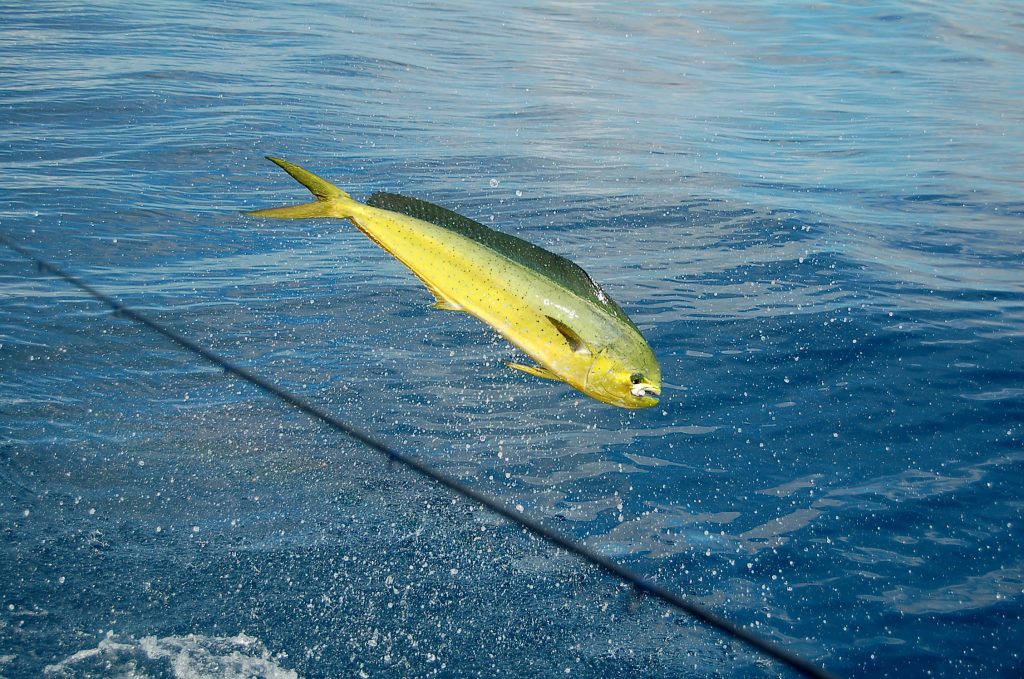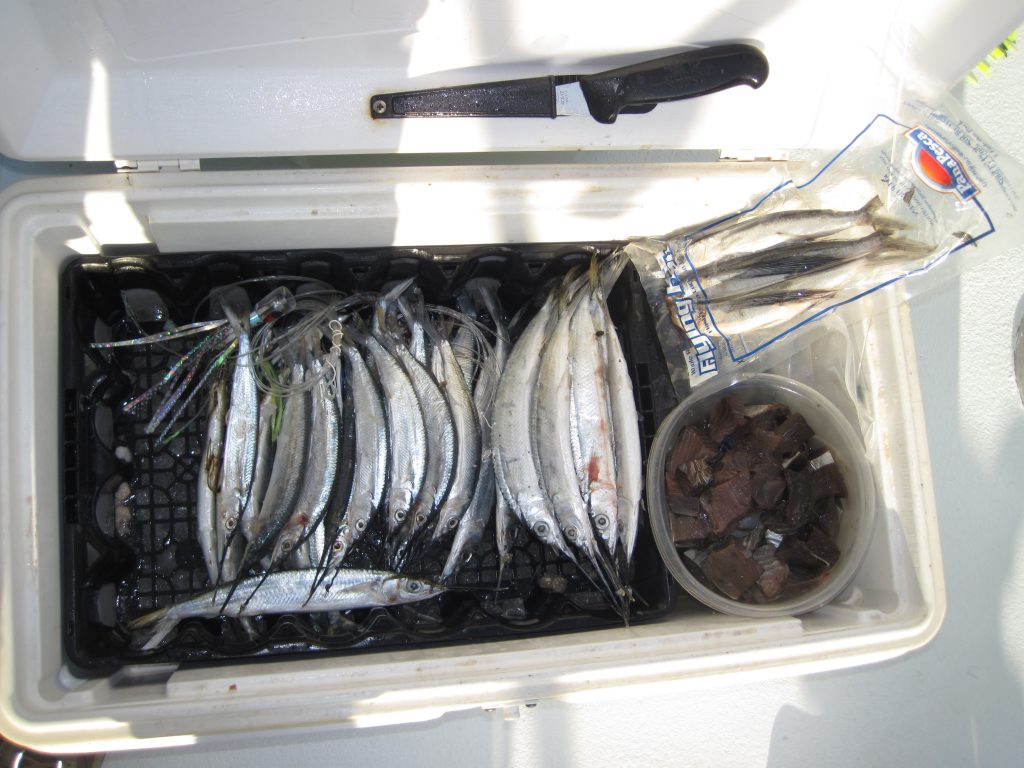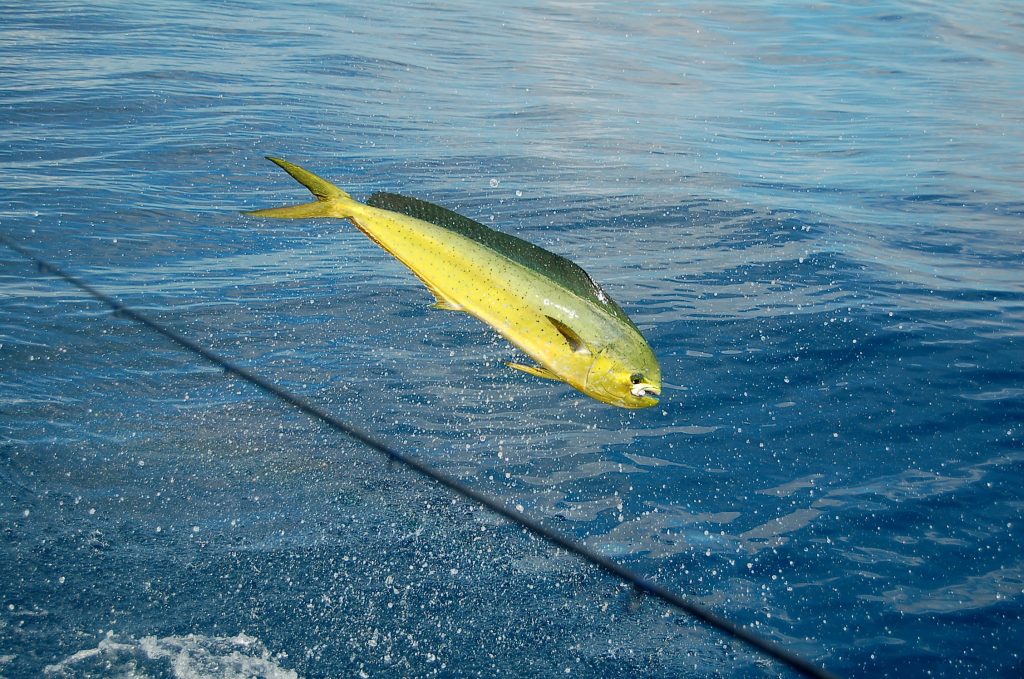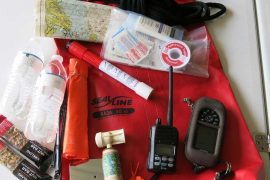
High-jumping mani-mahi are beautiful, tasty prizes that have lured countless anglers over the years to the Gulf Stream waters off Florida’s east coast.
But finding always-moving dolphin, as these share commonly known, in the flowing Gulf Stream current can be a hit-or-miss proposition a bet many anglers will take if they’re willing to burn fuel searching vast expanses of blue water for the floating weed mats and debris that attract dolphin.
South Florida’s offshore anglers were pleasantly surprised during the summer and fall of 2015, when they consistently found dolphin feeding along weedlines and current edges, usually 10 miles or more offshore.
“The dolphin bite was as good as I can remember for a while,” said Capt. Carl Miller of the Miller Time charterboat based at Boynton Harbor Marina, referring to the September 2015 action about 12 miles off Boynton Beach.
The consistent mahi bite produced plenty of opportunities for light-tackle fun as anglers put away trolling outfits and enjoyed drag-punishing action on spinning rods holding live baits such as pilchards, Spanish sardines and finger mullet.
A typical mahi game plan: Troll lures, rigged ballyhoo, skirted belly strips or rigged squid to find dolphin along weedlines, rips or general areas where fish have been reported. After hooking up, stop the boat and pitch out chunks of sardines or squid to attract more dolphin to the boat. Then pitch small live baits on 1/0 to 2/0 hooks and hold on.
Anglers who prefer running and gunning opt out of blind-trolling and use their dolphin-hunting skills to find patches of water or drifting debris that look like they’d be attractive to mahi. Some will chum with live or dead baits, while others will briefly set out trolling baits, in hopes that the fish will magically appear, as they sometimes do.
It’s hard to beat the sheer beauty of a dolphin meandering curiously near the boat. The bright turquoise colors of a hooked dolphin’s pectoral fins in the clear, Gulf Stream water is unmistakable.
“When they get lit up, they turn green and yellow,” said Capt. Mike McCormack, who operates the Angler Management charter boats based at Sailfish Marina in Palm Beach Shores. “It’s gorgeous.”
McCormack said his crew does not rely on finding long lines of sargassum when hunting for dolphin, even though weed mats sheltering small fish make prime dolphin feeding grounds.

Instead, McCormack and his crew watch the bottom machine for water temperature changes and study the ocean’s surface for current edges, or rips, as they run east into the Gulf Stream.
“The most common thing we see is a rip, and it’s always associated with a temperature change,” McCormack said.
In addition to trolling rigged ballyhoo staggered long and short on outriggers to attract dolphin, the Angler Management crew slow trolls a hookless Squid Nation dredge teaser close behind the boat to attract dolphin, then pitches baits to them. When the mahi first come up, McCormack likes to chum the water with cut squid and wait.
“The smaller fish come up first,” he said. Then he pitches out dead ballyhoo rigged with 6/0 circle hooks (bridled on top of the head) on 20-pound-class conventional rods or spinning rods rigged with 12-to 20-pound line and 6 feet of 40-pound uorocarbon leader.
To pull a bait down deeper when prospecting for big dolphin, the Angler Management crew uses an 8-ounce bank sinker connected with a rubber band about 20 feet up from the hook—far enough that the fish is not likely to use the weight to shake the hook. The sinker can break away, but usually doesn’t.
McCormack said he’s not shy about using relatively large blue runners to target big mahi, even though they have relatively small mouths.
“Some of the biggest dolphin I’ve had have come on really big runners,” McCormack said. “Dolphin have no business hit- ting the baits that they do.”
Mahi fishing styles vary with the sea- sons and the live baits available.
In the peak dolphin-fishing months of April and May, a freshly caught Spanish sardine allowed to roam freely around a weed mat or chunk of floating debris will prove tempting.
Pilchards are usually available throughout the summer and make excellent live chum and light-tackle dolphin baits when presented on 30- to 40-pound leader and 1/0 or 2/0 hooks.
Winter sailfish anglers often find dol- phin hitting live goggle-eyes or horse pilchards dangled under fishing kites. McCormack’s crew targets winter dolphin by setting up on a rip, temperature break…





